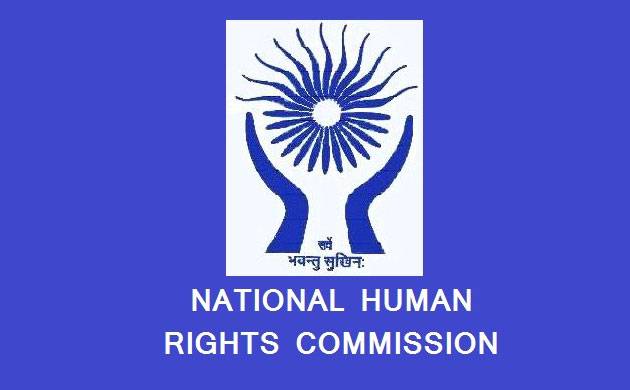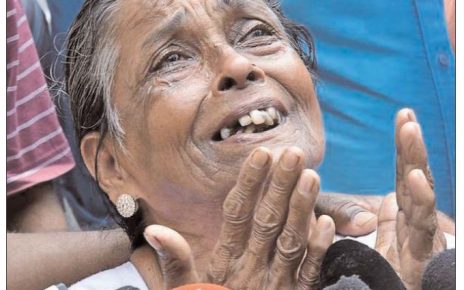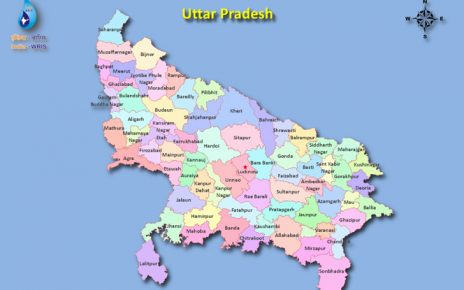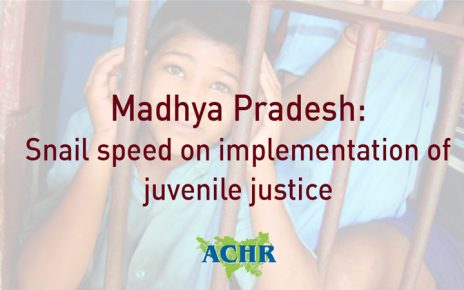That autopsies are critical for the administration of justice is undisputed. In cases warranting death sentence, autopsy reports determine the issue of death or life. Yet, autopsy reports in India are often doctored by the medical professionals, raising serious questions about administration of justice.
On 2 August 2013, the Asian Centre for Human Rights (ACHR)submitted a complaint to the NHRC regarding the custodial death of Saukhi Lal Kushwah due to alleged torture in Satna district of Madhya Pradesh on 30 July 2013. The deceased was picked up by the police on 16 July 2013 for interrogation in connection with the whereabouts of his son Kamlendra Kushwah who was allegedly involved in a kidnapping and murder case. The body of Saukhi Lal was later found near Lahiti on 30 July 2013 and the villagers alleged that he died due to police torture (electric shock) and his body was dumped there. The NHRC registered the case (Case No. 1640/12/38/2013-AD) and issued notice to the State Government of Madhya Pradesh. Pursuant to the NHRC directives, the State Government of Madhya Pradesh submitted the medical reports including two post-mortem reports and histopathological report of the deceased.
The NHRC sought opinion of the Medical Expert on the Panel of NHRC i.e. Dr. Anil Aggarwal, Director & Professor Forensic Medicine, Maulana Azad Medical College, New Delhi on the reports submitted by Madhya Pradesh. Dr Aggarwal’s report made stunning revelations that both the post mortem reports were “cooked up”.
The first post mortem (PM) report was conducted by a panel of three doctors namely MM Panday, KK Suryavanshi, Amar Singh and the second PM was conducted by another three doctors namely CM Tiwari, SK Mirani, Arun Trivedi. Dr Aggarwal stated that none of these doctors was a forensic expert and therefore not competent to conduct post mortem. The first PM found (i) Mild bluish tinge on nails, (ii) Small abrasion on left parietal region (iii) no other injuries while the second PM found (i) Hands pale, (ii) Skin wrinkled over both palms, (iii) Abrasion on left parietal region as mentioned in first PM report, (iv) Spleen enlarged and (v) no other external injuries. Both the PM reports stated the cause of death as acute myocardial infarctions (or heart attack).
Dr Aggarwal stated that both the PM reports were of “extremely poor quality” and none of the six doctors was a forensic expert. He stated, “It appears that by employing more and more doctors, the police was trying to find a cause of death. What they could not get in quality, they tried to substitute by adding quantity. Like trying to give 6 rotten apples to a patient, instead of just 1 fresh apple. The situation is also similar to trying to get, say a brain surgery by employing more and more doctors none of whom is a brain surgeon. One can employ hundreds of doctors in such cases, and no one will ever discover the cause of death because none of them is a forensic expert.”
Regarding the histopathological examination conducted at the Gandhi Medical College, Dr Aggarwal stated, “The file shows a report by the doctor in Gandhi Medical College, who has not written his name anywhere. So, it cannot be determined who that doctor was. But what is most shocking is that the doctor has commented on the state of occlusion of anterior left descending artery. This is simply not possible after two postmortems. In such suspicious deaths, the doctors at the first PM itself, should have dissected all the 3 coronary arteries to see blocks. If that did not occur, the team of second PM should have done that. If none of the 6 doctors had dissected the arteries of heart during 2 postmortems. It is virtually clear that none of them did any postmortem and simply cooked up the PM report. This is not so far-fetched and inconceivable. In most such cases, where non forensic specialists are employed to conduct postmortems, they are known to indulge in this practice. But this case virtually proves it.”
Preparing or providing false reports by the doctors is against the Indian Medical Council (Professional conduct, Etiquette and Ethics) Regulations, 2002. Clause 7.7 of the Regulations provides that “Registered medical practitioners are in certain cases bound by law to give, or may from time to time be called upon or requested to give certificates, notification, reports and other documents of similar character signed by them in their professional capacity for subsequent use in the courts or for administrative purposes etc. Such documents, among others, include the ones given at Appendix –4. Any registered practitioner who is shown to have signed or given under his name and authority any such certificate, notification, report or document of a similar character which is untrue, misleading or improper, is liable to have his name deleted from the Register.”[1]
Autopsies play a crucial role in the investigation and prosecution of culprits in murder cases. The UN Special Rapporteur on extrajudicial, summary or arbitrary executions, Christof Heyns after his visit to India in 2013 stated he was informed that “autopsies being performed by members of the Dom community instead of trained medical practitioners, casting doubts on the quality of the conclusion reached after the medical examination”.[2]
Based on the report of Dr Aggarwal, the NHRC’s Investigation Division stated, “the opinion of the forensic expert is a severe indictment of the doctors who conducted the post-mortem examinations. It is clear that they wrongly manipulated the PMRs. The only inference it leads to is that there was a gross human rights violation which was sought to be covered up in the PMRs”.
On the basis of this report, the NHRC held that “a case of violation of the human rights of the deceased Saukhilal Kushwah has been made out” and the Commission (i) directed the Director General of Police, Government of Madhya Pradesh to take legal action against the erring police personnel of P.S. Kolgawan, Satna, and (ii) directed the Secretary, Department of Health, Government of Madhya Pradesh to take disciplinary action against the doctors who conducted post mortem examination of the deceased and were responsible for preparing concocted post mortem reports.
In a response dated 19.11.2018, the Under Secretary (Home), Government of Madhya Pradesh stated that as per the opinion of the medical team the death of the deceased was due to heart attack and no police officer/official was found guilty in the matter. The NHRC rejected this submission and held that the State Government is vicariously liable to pay monetary compensation to the next of kin of the deceased children and directed the State of Madhya Pradesh to pay compensation of Rs.3,00,000/- to the next of kin of the deceased within six weeks. The Commission also issued the Secretaries, Ministry of Health, Ministry of Home Affairs and Ministry of Law and Justice, Government of India to submit a report whether the post mortems are conducted by the forensic experts in the country and if not what measures are being taken to appoint the forensic experts for conducting the post mortems and medico-legal examination and whether any guidelines have been issued regarding proper conducting of the post-mortem examinations.
On 11.12.2018, the NHRC issued reminders for submission of reports within eight weeks positively, failing which the Commission shall be constrained to take coercive steps U/S 13 of the Protection of Human Rights Act, 1993 for their personal appearance.
Endnotes:
[1]. Indian Medical Council (Professional conduct, Etiquette and Ethics) Regulations, 2002 available at https://www.mciindia.org/CMS/rules-regulations/code-of-medical-ethics-regulations-2002
[2]. Report of the Special Rapporteur on extrajudicial, summary or arbitrary executions, Christof Heyns on “Mission to India” (A/HRC/23/47/Add.1 dated 13 April 2013) available at https://documents-dds-ny.un.org/ doc/UNDOC/GEN/G13/134/53/PDF/G1313453.pdf?OpenElement




